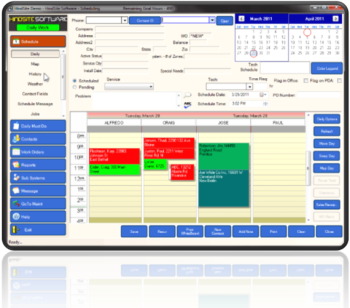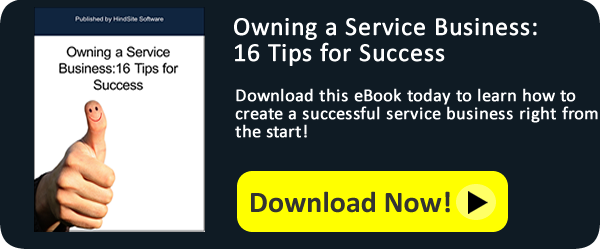Save yourself from wasting time and money on a new field service software by asking yourself these five questions before buying. With the growth of field service providers, there is now more variety in what certain programs can offer you, so it’s best to do some research and make comparisons to see what’s best for your business.

1. Is it simple to use?
What good is a brand-new system if you can’t operate it? Look into billing and geographic features and be aware of any constraints (like must run on Windows Server 2010). If the software is customizable and easy to configure you can simplify it to your liking for you and your team.
[Related: 10 Tasks Automated with Field Service Software]
2. How much support will you get?
Mobility is key in field service software. Be sure you can access all or most of the program’s features off-site so you can stay connected with your crew. Also ask yourself is this software going to make your business more efficient and is the provider going to build confidence and give you the tools to grow? Field management systems are complex so you need to be able to rely on the provider to help when things go astray. Make sure to ask the supplier for their turnaround time to gauge how long on average it takes to get support. Better yet, call the support line and see if a live person answers.
3. Is it a browser-based or native apps?
Native apps are specifically designed to run on a device’s operating system and typically needs to be adapted for different devices. Whereas a web app, or browser application, is when the software is downloaded from the Web each time it’s opened. Which is “better” is a never-ending debate among designers and programmers, but it’s understood that native apps, such as what HindSite uses, is very user-friendly and has a higher usage volume than web apps. Not to mention, native apps work with your camera and GPS and tend to run faster that web-based apps. However, web apps are accessible on a wide range of device platforms and free to distribute it among your team.
4. Can you integrate it with your existing systems?
If you can save yourself from purchasing new software by using what you already have, that’s a plus. You want to be using software that can last many years with your business. But when you have to look to upgrade, it’s likely that you can find new software to coexist with the old since software today is so versatile. However, this can tangle up the wires quite literally, so if the programmer is telling you it would be more efficient ridding the old and your business can afford to do so, that’s a change worth considering. But if it’s not broke, don’t fix it!
5. What intelligence capabilities does it have?
Look to see if the software has tracking features like inventory management, predictive analysis and graphics that make reporting easy and stress-free. Can you track and monitor in real-time? Does it have customer relationship management (CRM), scheduling, estimates, shared calendar management, mobile access, invoicing or dispatching? The more intelligence options the better.
For more field service business tips, check out our free eBook!








